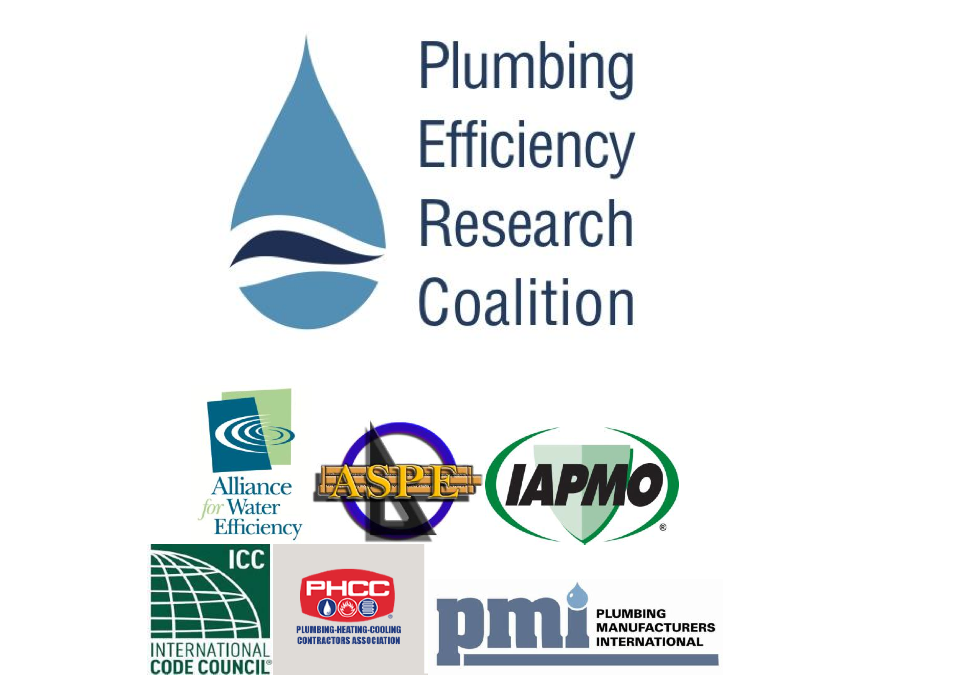The Plumbing Efficiency Research Coalition is set to begin its long-anticipated Drainline Transport in Buildings study. The effort is aimed at determining if decreasing levels of water flow––caused by increasingly efficient plumbing fixtures––are sufficient to clear debris from plumbing pipes.
Essentially, plumbing experts have expressed concerns that the industry has reached a tipping point in terms of the ability of low-flow fixtures to adequately transport waste through drain lines, particularly in larger commercial systems with long horizontal runs to the sewer. Soon, they worry, end-users and professionals will avoid using more efficient products.
That, combined with the fact that such problems have been reported with low-flow plumbing systems in Europe and Australia, has raised many questions.
“I look forward to the results of the Drainline Transport study,” says David C. Smith, PE, plumbing and fire protection department manager, Bala Consulting Engineers, King of Prussia, Pa. “Logic states that less water in the waste stream will not carry the waste as far in the drainage piping.”
By analyzing the drainage issue from a standpoint of slope, flush volume, toilet design, and whether periodic surges of water into a building drain can help, researchers hope to come away with a more informed understanding of the issue.
David E. DeBord, CPD, LEED BD+C, ARCSA-AP, a Chicago-based plumbing and fire protection engineer, wonders if ultimately the industry will need to reduce the size of piping to maintain the minimum velocities required to assure proper scouring, and whether a 1/8-inch minimum pitch per foot of piping is still sufficient in this new world of low-flow plumbing systems.
PERC’s coalition members include the International Association of Plumbing & Mechanical Officials (IAPMO), Alliance for Water Efficiency (AWE), the American Society of Plumbing Engineers (ASPE), the International Code Council (ICC), Plumbing-Heating-Cooling Contractors (PHCC), and Plumbing Manufacturers International (PMI). The group’s impending research is scheduled to be conducted at an American Standard testing facility. +
Related Stories
| Aug 11, 2010
29 Great Solutions for the AEC Industry
AEC firms are hotbeds of invention and innovation to meet client needs in today's highly competitive environment. The editors of Building Design+Construction are pleased to present 29 "Great Solutions" to some of the most complex problems and issues facing Building Teams today. Our solutions cover eight key areas: Design, BIM + IT, Collaboration, Healthcare, Products, Technology, Business Management, and Green Building.
| Aug 11, 2010
Permanent tribute to Daniel Burnham and his Plan of Chicago proposed for Grant Park Museum Campus
The first-place winner of a design competition for a public memorial celebrating Daniel Burnham's impact on Chicago will be announced at a news conference Wednesday, July 8, at 10am CDT. The proposed site for the memorial is on the Museum Campus just north of The Field Museum. The announcement comes after nearly two years of planning by Chicago's architecture, design and urban planning community about how to best honor the legacy of Burnham and the Plan of Chicago he co-wrote with Edward Bennett.
| Aug 11, 2010
Arup, SOM top BD+C's ranking of the country's largest mixed-use design firms
A ranking of the Top 75 Mixed-Use Design Firms based on Building Design+Construction's 2009 Giants 300 survey. For more Giants 300 rankings, visit http://www.BDCnetwork.com/Giants
| Aug 11, 2010
Architecture billings index takes turn for the worse
After showing signs of stabilization over the last three months, the Architecture Billings Index (ABI) plunged nearly five points in June. As a leading economic indicator of construction activity, the ABI reflects the approximate nine to twelve month lag time between architecture billings and construction spending. The American Institute of Architects (AIA) reported the June ABI rating was 37.7, far lower than the 42.9 the previous month.
| Aug 11, 2010
International Living Building Institute established to advance 'living buildings'
The idea of a Living Building, a high-performance building that produces its own power and cleans and reuses all of its water, is gaining momentum around the world. In an effort to oversee the global development of Living Buildings, the International Living Building Institute (ILBI) has been established.
| Aug 11, 2010
Populous selected to design 'crystalline skin' stadium for 2014 Winter Olympics
Russian officials have selected global architect Populous to design the main stadium for the 2014 Winter Olympic and Paralympic Games in Sochi, Russia. The 40,000-seat stadium will feature a crystalline skin that "engages with its surroundings by day and provides an iconic representation of the color and spectacle of the games when illuminated at night," said Populous senior principal John Barrow.
| Aug 11, 2010
M&A deal volume down 67% in engineering/construction sector: PricewaterhouseCoopers
Global Economic Uncertainty Results in Sluggish Deal Activity in U.S.; China Shows Significant Opportunity for Growth
| Aug 11, 2010
Three Opus Corporation companies file for bankruptcy
Opus Corporation, a developer headquartered in Minnetonka, Minn., filed for bankruptcy in three of its five regional operating companies: Opus East, Opus South, and Opus West. CEO Mark Rauenhorst said sharp declines in commercial real estate values and tight credit markets caused difficulties in refinancing assets and restructuring lending agreements.







